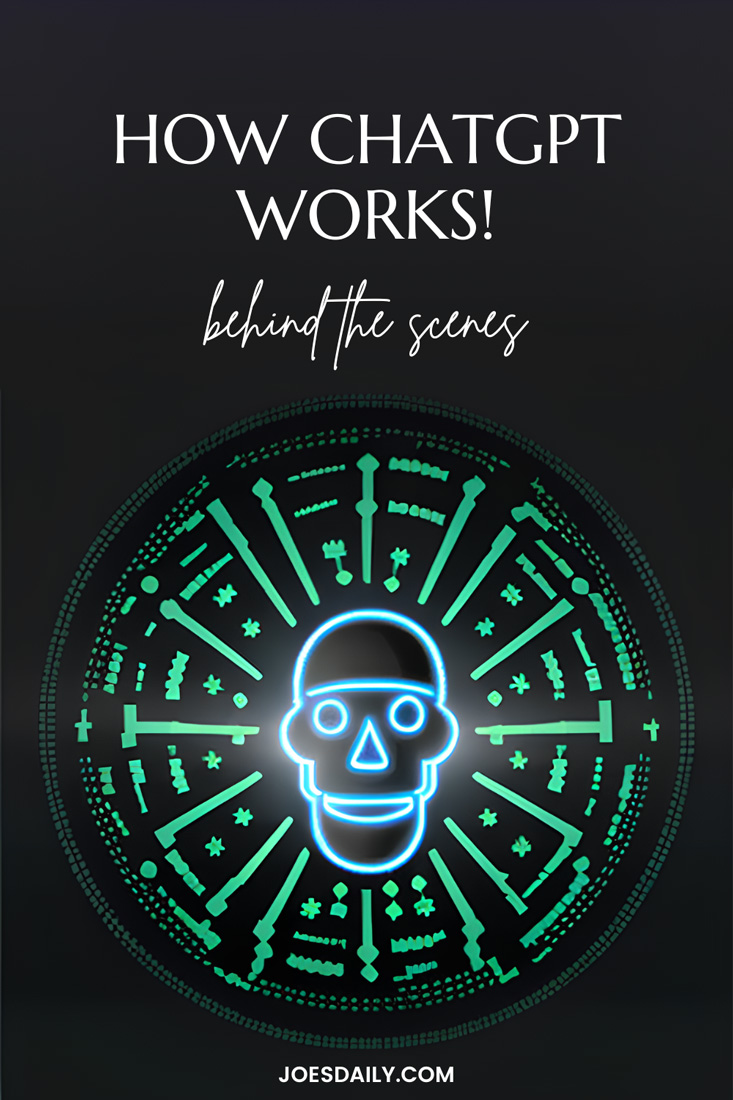7 minute read
Ever wondered how ChatGPT works? In this post, we’ll dive into the GPT-4 architecture, the training process, and what goes on behind the scenes when you interact with ChatGPT.

GPT-4 Architecture
The GPT-4, or Generative Pre-trained Transformer 4, is the fourth iteration in the groundbreaking GPT series developed by OpenAI. It utilizes a powerful and sophisticated transformer architecture, enabling it to process and generate text that is strikingly similar to human-generated content. In this expanded section, we’ll discuss the key components of the transformer architecture, the self-attention mechanisms, and how these elements contribute to the impressive capabilities of GPT-4.
1. Transformer Architecture:
Transformers, first introduced by Vaswani et al. in 2017, have revolutionized the field of natural language processing (NLP). They are designed to handle sequential data, such as text, more effectively than previous architectures like recurrent neural networks (RNNs) or long short-term memory (LSTM) networks. A key advantage of transformers is their ability to process sequences in parallel, rather than sequentially, resulting in faster training and improved performance on large-scale language tasks.
2. Encoder-Decoder Structure:
The transformer architecture consists of an encoder and a decoder. However, in the case of GPT-4, only the decoder is utilized. The encoder is responsible for processing input data, while the decoder generates output data based on the input’s encoded representation. GPT-4 leverages the power of the decoder to generate text autoregressively, predicting one word at a time based on the previously generated words.
3. Self-Attention Mechanisms:
A key innovation of the transformer architecture is the self-attention mechanism. Self-attention allows the model to weigh the importance of words in a sequence relative to each other. It computes a score for each word pair in the input sequence and then applies a softmax function to determine the weights. This process allows the model to focus on the most relevant words in the context of the given input, leading to more accurate and contextually relevant content generation.
4. Layered Structure:
GPT-4’s transformer architecture is composed of multiple layers, with each layer containing self-attention mechanisms and feed-forward neural networks. These layers are stacked on top of each other, enabling the model to capture increasingly complex patterns and relationships within the text data. The depth of GPT-4’s architecture is a crucial factor in its ability to generate human-like text.
In summary, the GPT-4 architecture relies on the powerful transformer framework and its self-attention mechanisms to process and generate contextually relevant content. By leveraging these advanced techniques, GPT-4 demonstrates impressive capabilities in a wide range of natural language processing tasks, making it a valuable tool in various applications.
Training Process – How ChatGPT Works
ChatGPT’s training process is a critical aspect of its performance and capabilities. It involves two main phases: pre-training and fine-tuning. Each phase serves a specific purpose in shaping the model’s understanding of language, contextual relationships, and the ability to generate accurate and relevant responses. In this expanded section, we will delve deeper into these two phases and their significance in the development of ChatGPT.
1. Pre-training Phase:
During the pre-training phase, ChatGPT is exposed to an extensive dataset containing diverse text sources, including books, articles, websites, and other written content. This large corpus of text allows the model to learn the nuances of language, such as grammar, syntax, semantics, and even idiomatic expressions.
The primary objective of pre-training is for the model to learn how to predict the next word in a sentence, given the words that precede it. This process is known as masked language modeling or causal language modeling. Through this task, ChatGPT captures not only grammar and vocabulary but also learns facts about the world, general knowledge, and reasoning abilities.
By training on such a vast dataset, the model acquires a broad understanding of language patterns, which serves as a foundation for the next phase of training.
2. Fine-tuning Phase:
The fine-tuning phase is where the model is refined to generate more accurate, context-specific, and relevant responses. During this phase, ChatGPT is trained on a narrower and more focused dataset, which is often created with the help of human reviewers.
These reviewers follow guidelines provided by OpenAI to review and rate potential model outputs for a range of inputs. The model then generalizes from this reviewer feedback to respond to a wide array of user inputs. This iterative feedback process between the model and reviewers ensures that ChatGPT aligns more closely with human values and expectations.
Fine-tuning helps the model develop a deeper understanding of context, enabling it to generate responses that are not only grammatically correct but also coherent, engaging, and appropriate to the given input. This phase is crucial for optimizing ChatGPT’s performance in specific applications and scenarios.
In conclusion, the two-phase training process of ChatGPT – pre-training and fine-tuning – plays a vital role in its ability to generate human-like responses. Pre-training provides a foundation in language understanding, while fine-tuning sharpens the model’s contextual awareness and relevance. This training process is instrumental in making ChatGPT a powerful and versatile tool for a wide range of applications.
Generating Human-like Responses
The core functionality of ChatGPT lies in its ability to generate responses that are not only accurate but also engaging and contextually relevant. When you interact with ChatGPT, it processes your input and crafts a response based on the knowledge and patterns it has acquired during its training. In this expanded section, we’ll explore the steps involved in generating responses, the role of context, and the limitations arising from the model’s knowledge cutoff date.
1. Tokenization and Processing:
When you provide an input to ChatGPT, the first step is tokenization, where the text is broken down into smaller units called tokens. These tokens represent words or subwords, which are then processed by the model. The tokenization process is crucial for the model to understand and generate language accurately.
2. Contextual Understanding:
As ChatGPT processes your input, it uses its self-attention mechanisms to weigh the importance of each word in the context of the conversation. This process allows the model to identify the most relevant words and concepts and use them to generate a coherent and contextually appropriate response.
3. Response Generation:
Once the model has processed the input and understood the context, it generates a response word by word. This autoregressive approach helps the model craft replies that are not only relevant but also engaging and fluent. The generation process can be controlled by parameters like temperature and maximum token length, which influence the creativity and verbosity of the response, respectively.
4. Limitations and Knowledge Cutoff:
While ChatGPT is an impressive language model, it’s essential to be aware of its limitations, especially concerning its knowledge base. The model has a knowledge cutoff date of September 2021, meaning that it may not have information on more recent events, developments, or updates in various fields.
As a result, ChatGPT’s responses might be outdated or lack critical information that has emerged since its training data was collected. Users should be cautious when seeking information on recent topics and verify the accuracy of ChatGPT’s responses with up-to-date sources.
In summary, when generating responses, how ChatGPT works is by employing a combination of tokenization, contextual understanding, and autoregressive generation to create engaging and contextually relevant replies. While its performance is impressive, it’s crucial to keep in mind the model’s knowledge cutoff date and verify the accuracy of its responses when dealing with recent events or developments.
ChatGPT’s advanced architecture and training process allows it to generate human-like responses, making it a powerful tool for various applications. By understanding how ChatGPT works, we can better appreciate the potential of AI language models and their role in shaping our interactions with technology.






